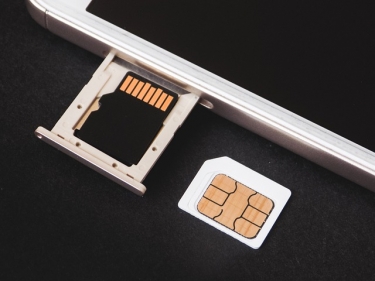

The evolution of the SIM card over time
source link: https://itwire.com/your-it-news/wi-fi/the-evolution-of-the-sim-card-over-time.html
Go to the source link to view the article. You can view the picture content, updated content and better typesetting reading experience. If the link is broken, please click the button below to view the snapshot at that time.
GUEST OPINION: From old-fashioned SIMs the size of a credit card to the modern eSIM for Thailand that does not need a physical card at all, the technology has evolved considerably since it made its debut in the early 1990s. Here is a look at the main advances in SIM card technology and at some future developments.
The origins of the SIM card
The basic concept of incorporating a silicon-integrated circuit chip into a plastic card dates back to the 1960s. However, the first commercial subscriber identity module or SIM was only introduced in 1991, at the same time as the Global System for Mobile Communications (GSM) was implemented in Finland. The SIM was developed by Germany’s Giesecke+Devrient to offer secure access to the mobile network. The company initially sold 300 of the cards to Radiolinja, a Finnish wireless network operator, which launched the first GSM network. Back then, the SIM was the size of a credit card and had 4 KB of memory space. In comparison, modern SIM cards have between 8 KB and 256 KB of memory.
Key SIM developments
Following the launch of the SIM, one of the key developments came four years later with the SIM Toolkit, which allowed the SIM to communicate with the user and the network.
Another evolution of the SIM happened in 1996 with the launch of the mini-SIM. Now called the standard SIM, the mini came in at 15 mm x 25 mm, which significantly shrank down the original credit card size version (around 54 mm x 86 mm). In 2010, the micro SIM made its appearance in the iPhone 4, which was the first smartphone to support the smaller version. The micro SIM measures 12 mm x 15 mm. The SIM shrank even smaller in 2012, when the nano SIM debuted. Most modern phones still use the nano version, which measures 8.8 mm x 12.3 mm.
An important thing to note is that while the size of the SIM has reduced over the years, the actual chip remains the same size. The reductions have been in the size of the plastic border. As a result, the nano was pared down to essentially the chip without a border. Among other things, a smaller SIM card means a smaller slot is needed in the phone, freeing up space for other components.
A further evolution to mention is the development of devices with dual SIM functionality. This allows two SIM cards to be inserted into the same phone, giving the user the ability to switch between mobile networks. This has several advantages, such as having separate work and private phone numbers and being able to add a local SIM for travel. Devices that support a dual SIM have been around since 2000, with the launch of the Benefon Twin. Nokia, Samsung and Sony were among the makers to bring in dual SIM-compatible devices in 2010, while in 2018, Apple introduced dual SIM functionality on its iPhone XS models.
The future of SIM technology
One of the main recent developments in SIM cards has been the introduction of the embedded SIM (eSIM) or digital SIM. Unlike the previous iterations, the digital SIM requires no physical card. Instead, the SIM is embedded directly into the device. Introduced in the Samsung Gear S2 Classic 3G smartwatch in 2016, the digital SIM has been gaining significant traction in recent years. They are now featured in some of the latest handsets of big-name manufacturers like Samsung and Google, plus the Apple iPhone XS and later models.
The digital SIM has several advantages. For example, rather than have to worry about purchasing a physical SIM to get mobile data to use abroad, travellers with compatible phones can buy an eSIM that is activated remotely through a QR code. Scanning the code unlocks the plan, allowing the user to access mobile data via a local network. As well as convenience, this offers added flexibility. For example, travellers can buy an eSIM for Thailand or for the Asia region. This makes accessing the internet while crossing borders far easier. Travel eSIMs can also work alongside a physical SIM card.
Conclusion
Overall, the SIM card has come a long way since Giesecke+Devrient introduced them in 1991. Indeed, from those first 300 cards globally, the SIM market has been forecast to grow to around $9.1bn by 2030, up from $4.6 billion in 2022. As innovative telecommunications technologies have been introduced, so too the SIM card has evolved to keep pace with increasing demands for accessibility, storage and connectivity on the go.
Read 66 times
Please join our community here and become a VIP.
Subscribe to ITWIRE UPDATE Newsletter here
JOIN our iTWireTV our YouTube Community here
BACK TO LATEST NEWS here
GARTNER MARKET GUIDE FOR NDR 2022
You probably know that we are big believers in Network Detection and Response (NDR).Did you realise that Gartner also recommends that security teams prioritise NDR solutions to enhance their detection and response?
Picking the right NDR for your team and process can sometimes be the biggest challenge.
If you want to try out a Network Detection and Response tool, why not start with the best?
Vectra Network Detection and Response is the industry's most advanced AI-driven attack defence for identifying and stopping malicious tactics in your network without noise or the need for decryption.
Download the 2022 Gartner Market Guide for Network Detection and Response (NDR) for recommendations on how Network Detection and Response solutions can expand deeper into existing on-premises networks, and new cloud environments.
PROMOTE YOUR WEBINAR ON ITWIRE
It's all about Webinars.Marketing budgets are now focused on Webinars combined with Lead Generation.
If you wish to promote a Webinar we recommend at least a 3 to 4 week campaign prior to your event.
The iTWire campaign will include extensive adverts on our News Site itwire.com and prominent Newsletter promotion https://itwire.com/itwire-update.html and Promotional News & Editorial. Plus a video interview of the key speaker on iTWire TV https://www.youtube.com/c/iTWireTV/videos which will be used in Promotional Posts on the iTWire Home Page.
Now we are coming out of Lockdown iTWire will be focussed to assisting with your webinars and campaigns and assistance via part payments and extended terms, a Webinar Business Booster Pack and other supportive programs. We can also create your adverts and written content plus coordinate your video interview.
We look forward to discussing your campaign goals with you. Please click the button below.
Recommend
About Joyk
Aggregate valuable and interesting links.
Joyk means Joy of geeK

